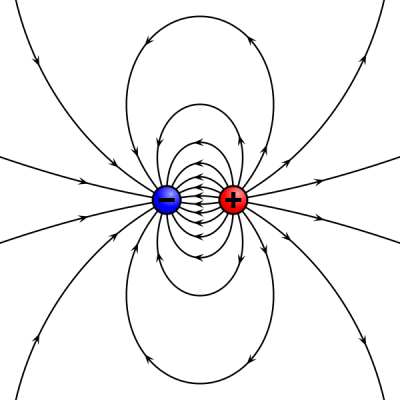Course description
Electric Dipole & Dielectric:
An electric dipole is a separation of positive and negative charges. The simplest example of this is a pair of electric charges of equal magnitude but opposite sign, separated by some (usually small) distance.
Dipole Moment
Ø The electric dipole moment for a pair of opposite charges of magnitude q is defined as the magnitude of the charge times the distance between them and the defined direction is toward the positive charge.
Ø It is a useful concept in atoms and molecules where the effects of charge separation are measurable, but the distances between the charges are too small to be easily measurable.
Ø It is also a useful concept in dielectrics and other applications in solid and liquid materials.
Electric Field in Dielectric Media
Dielectric
Ø A dielectric (or dielectric material) is an electrical insulator that can be polarized by an applied electric field.
Ø When a dielectric is placed in an electric field, electric charges do not flow through the material as they do in an electrical conductor but only slightly shift from their average equilibrium positions causing dielectric polarization.
Ø Because of dielectric polarization, positive charges are displaced in the direction of the field and negative charges shift in the opposite direction.
Ø This creates an internal electric field that reduces the overall field (effective electric field) within the dielectric itself.
Polarization of Dielectric
Ø If a material contains polar molecules, they will generally be in random orientations when no electric field is applied.
Ø An applied electric field will polarize the material by orienting the dipole moments of polar molecules.
Ø This decreases the effective electric field between the plates and will increase the capacitance of the parallel plate structure.
Ø The dielectric must be a good electric insulator so as to minimize any DC leakage current through a capacitor.
The presence of the dielectric decreases the electric field produced by a given charge density.
Ø The factor k by which the effective field is decreased by the polarization of the dielectric is called the dielectric constant of the material.
The presence of the dielectric decreases the electric field produced by a given charge density.
Ø The factor k by which the effective field is decreased by the polarization of the dielectric is called the dielectric constant of the material.


















